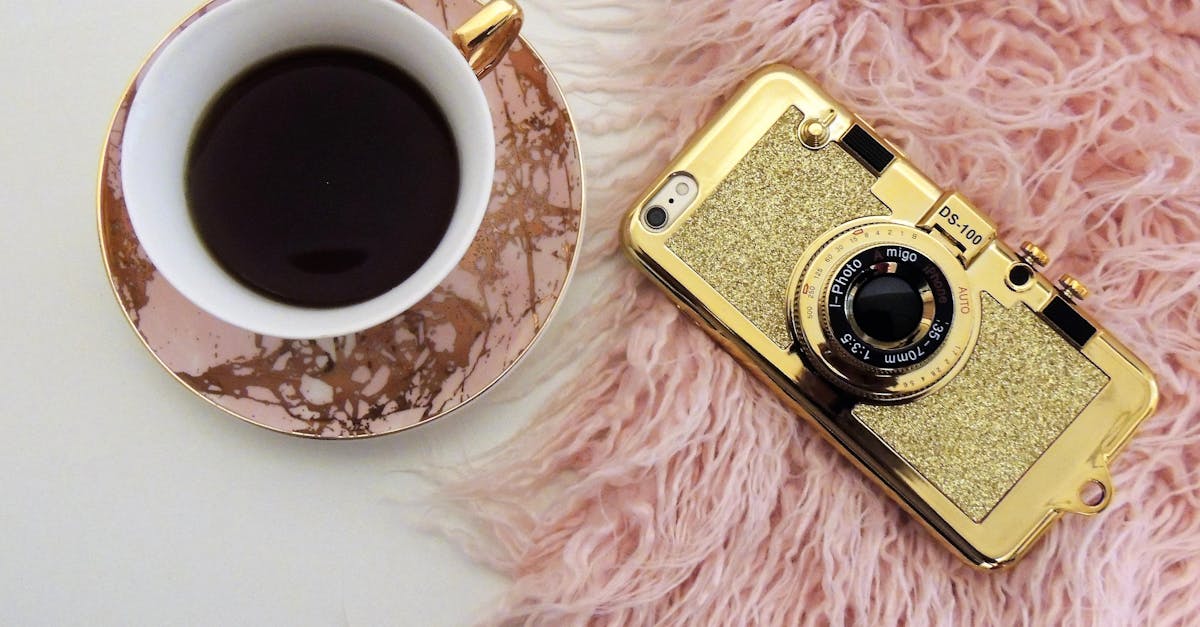Unveiling the Enchanting Dance of Copper and Gold: A Journey through Time and Art

Deep within the annals of human history, the fusion of copper and gold has given rise to alluring alloys that have captivated civilizations across time. From the opulent artifacts of ancient Egypt to the intricate masterpieces of contemporary jewelry, these alloys have played an integral role in shaping our cultural and artistic expressions. This captivating journey into the realm of copper and gold alloys reveals the secrets behind their fiery elegance, delicate charm, and enduring allure. By delving into the science of alloy formation and exploring their myriad applications, we gain a profound appreciation for these timeless treasures.
Our exploration begins with the historical significance of copper and gold alloys, tracing their use throughout civilizations. We unravel the captivating allure that has made these alloys a coveted material for everything from coinage to exquisite jewelry. Next, we delve into the scientific principles behind alloying, examining the properties and characteristics that emerge from the harmonious union of copper and gold. This understanding lays the foundation for comprehending the captivating hues of red and rose gold.
Further, we embark on a quest to unveil the secrets behind red gold’s fiery elegance and rose gold’s delicate charm. We dissect their unique compositions and the factors that govern their enchanting appearances. Along the way, we uncover the limitless possibilities of these alloys in jewelry design, appreciating their versatility and aesthetic appeal. Throughout our journey, we remain mindful of practical considerations, including durability, maintenance, and cost, ensuring informed decision-making.
Key Insights
- Copper and gold alloys have a timeless allure, captivating civilizations throughout history.
- The scientific principles behind alloy formation govern the unique properties and characteristics of these alloys.
- Red gold’s fiery elegance stems from the harmonious fusion of copper and gold, while rose gold’s delicate charm results from the addition of copper and sometimes silver.
- Red and rose gold offer limitless possibilities in jewelry design, complementing a variety of gemstones and personal styles.
- Understanding the durability, maintenance, and cost considerations of red and rose gold empowers informed decision-making, ensuring that these precious alloys continue to be cherished for generations to come.
1. The Allure of Copper and Gold: A Timeless Combination
Since the dawn of civilization, copper and gold have held a captivating allure, their union resulting in alloys that have shaped cultures and ignited artistic expression across millennia. The historical significance of these alloys is woven into the fabric of human history, from the opulent treasures of ancient Egypt to the intricate adornments of modern-day jewelry. Copper’s malleability and reddish hue made it a versatile material for tools, weapons, and decorative objects, while gold’s luster and resistance to tarnishing imbued it with a timeless allure, symbolizing power, wealth, and divinity.
Their enduring appeal lies in their unique properties and the endless possibilities they offer to artisans and designers. The fusion of copper and gold creates alloys that exhibit a mesmerizing range of colors, from the fiery elegance of red gold to the delicate charm of rose gold. These alloys are not only visually captivating but also possess desirable characteristics such as strength, durability, and malleability, making them ideal for a wide range of applications, from intricate jewelry to durable coins.
Throughout history, copper and gold alloys have played a pivotal role in cultural and artistic expression. In ancient Egypt, they were used to craft exquisite jewelry, religious artifacts, and funerary masks, symbolizing the power and divinity of the pharaohs. In medieval Europe, gold alloys were intricately worked into ornate chalices, reliquaries, and other religious objects, showcasing the skill and artistry of master craftsmen. Today, copper and gold alloys continue to inspire contemporary designers, who incorporate them into a dazzling array of jewelry, sculptures, and decorative objects, capturing the timeless allure that has captivated civilizations for centuries.
2. Unveiling the Science: Understanding Alloy Formation

Delving into the scientific principles behind alloy formation is akin to embarking on a quest to unravel the secrets of alchemy. When copper and gold are united, their atomic structures undergo a fascinating transformation, resulting in alloys that possess a unique set of properties and characteristics. Understanding the science behind this process empowers us to appreciate the remarkable qualities that make these alloys so desirable.
At the heart of alloy formation lies the concept of atomic bonding. When copper and gold atoms come together, they form metallic bonds, sharing their valence electrons to create a cohesive structure. These bonds determine the strength, hardness, and other physical properties of the resulting alloy. The proportions of copper and gold in the alloy, as well as the presence of other elements, can be precisely controlled to achieve specific characteristics. For instance, increasing the gold content enhances the alloy’s resistance to tarnishing and corrosion, while adding silver can elevate its strength and durability.
Alloying not only influences the physical properties of the metal but also its appearance. By carefully manipulating the composition and structure of the alloy, artisans and metallurgists can create alloys that exhibit a captivating array of colors, from the fiery brilliance of red gold to the delicate blush of rose gold. The interplay of light with the alloy’s surface, influenced by factors such as crystal structure and surface finish, gives rise to these mesmerizing hues. Understanding the science behind alloy formation empowers us to appreciate the intricate relationship between composition, structure, and the resulting properties and appearance of these captivating alloys.
3. Red Gold: Unveiling Its Fiery Elegance
Red gold, with its fiery elegance, has captivated hearts and imaginations for centuries. Its captivating crimson hue sets it apart, making it a mesmerizing choice for jewelry, decorative objects, and even coinage. Delving into the creation of red gold reveals the secrets behind its unique composition and the factors that influence its captivating color.
The creation of red gold lies in the harmonious fusion of copper and gold. By carefully controlling the proportions of these two elements, artisans and metallurgists can achieve a wide range of red gold alloys, each with its own distinct shade. The higher the copper content, the more intense the red hue becomes. However, maintaining a balance is crucial, as excessive copper can compromise the alloy’s strength and durability. Other elements, such as silver and zinc, can also be added to further modify the alloy’s properties and appearance.
The captivating crimson hue of red gold is a result of a phenomenon known as surface plasmon resonance. When light interacts with the alloy’s surface, it excites electrons within the metal, causing them to oscillate in resonance with the light waves. This resonance amplifies certain wavelengths of light, resulting in the reflection of warm, red hues. The size, shape, and distribution of the metal nanoparticles on the alloy’s surface play a significant role in determining the exact shade of red.
4. Rose Gold: Exploring Its Delicate Charm

Rose gold, with its delicate charm and enchanting pink hue, has emerged as a beloved choice for jewelry, watches, and other decorative objects. Its alluring color sets it apart, making it a popular choice for those seeking a touch of warmth and elegance. Discover the secrets behind rose gold’s enchanting pink hue, its composition, and the variations in its appearance.
The creation of rose gold involves the harmonious fusion of gold, copper, and sometimes silver. By carefully controlling the proportions of these elements, artisans and metallurgists can achieve a wide range of rose gold alloys, each with its own distinct shade. The higher the copper content, the more intense the pink hue becomes. However, maintaining a balance is crucial, as excessive copper can compromise the alloy’s strength and durability.
The enchanting pink hue of rose gold is a result of a phenomenon known as surface plasmon resonance. When light interacts with the alloy’s surface, it excites electrons within the metal, causing them to oscillate in resonance with the light waves. This resonance amplifies certain wavelengths of light, resulting in the reflection of warm, pink hues. The size, shape, and distribution of the metal nanoparticles on the alloy’s surface play a significant role in determining the exact shade of pink.
5. Artistic Applications: Red and Rose Gold in Jewelry and Design
Red and rose gold, with their captivating hues and versatility, have captured the hearts of jewelry designers and enthusiasts alike. These alloys offer a dazzling array of possibilities for creating exquisite pieces that exude elegance, warmth, and timeless appeal. Explore the limitless possibilities of red and rose gold in jewelry design, appreciating their versatility and aesthetic charm.
Red and rose gold are exceptionally malleable and ductile, making them ideal for intricate designs and delicate craftsmanship. Their rich colors lend themselves beautifully to both classic and contemporary styles, allowing designers to create pieces that are both timeless and fashion-forward. Red gold, with its fiery brilliance, adds a touch of drama and sophistication to any design, while rose gold, with its delicate charm, brings a romantic and feminine touch. Whether crafted into intricate earrings, pendants, rings, or bracelets, these alloys have the versatility to complement any personal style.
The aesthetic appeal of red and rose gold extends beyond their inherent beauty. These alloys pair harmoniously with a variety of gemstones, allowing designers to create visually stunning and meaningful pieces. Red gold, with its bold hue, complements warm-colored gemstones such as rubies, garnets, and sapphires, creating a captivating contrast. Rose gold, with its softer tones, pairs effortlessly with pink and white gemstones such as morganite, diamonds, and pearls, exuding a delicate and romantic charm. The versatility of these alloys empowers designers to bring their creative visions to life, crafting pieces that are both visually captivating and deeply personal.
6. Practical Considerations: Durability, Maintenance, and Cost
When it comes to selecting jewelry, durability, maintenance, and cost are practical considerations that play a significant role in decision-making. Red and rose gold alloys, while captivating in their appearance, offer unique characteristics that require careful evaluation. Gain practical insights into the durability, maintenance, and affordability of these alloys, ensuring informed choices that align with your lifestyle and budget.
Red and rose gold alloys, composed primarily of gold and copper, possess inherent strength and durability. However, the addition of copper makes them slightly less hard than pure gold. This delicate balance between hardness and malleability allows for intricate designs while ensuring that your treasured pieces can withstand the wear and tear of everyday use. Their resistance to tarnishing is another practical advantage, ensuring that their beauty endures over time.
Maintaining the pristine condition of red and rose gold jewelry is relatively straightforward. Regular cleaning with a soft cloth and mild soap can remove dirt and fingerprints, restoring their original luster. Avoiding exposure to harsh chemicals and abrasive materials is recommended to preserve their delicate surfaces. The frequency of professional cleaning and polishing depends on how often the pieces are worn and your personal preferences.
7. Conclusion: Embracing the Beauty of Copper and Gold
Our captivating journey into the realm of copper and gold alloys has unveiled their timeless allure, versatility, and enduring beauty. These alloys, with their unique properties and captivating hues, have left an indelible mark on human history, inspiring countless works of art, jewelry, and cultural artifacts. As we conclude our exploration, let us embrace the beauty of copper and gold, appreciating their enduring appeal and the endless possibilities they offer to artists, designers, and all who cherish their timeless elegance.
Copper and gold alloys have stood the test of time, their durability ensuring that their beauty can be passed down through generations. Their resistance to tarnishing and corrosion means that they retain their luster and brilliance, making them a cherished choice for heirlooms and treasured possessions. The malleability and versatility of these alloys allow for intricate designs and delicate craftsmanship, empowering artisans to transform their creative visions into tangible masterpieces.
Whether in the fiery elegance of red gold or the delicate charm of rose gold, these alloys possess a timeless appeal that transcends trends and seasons. Their versatility complements a wide range of personal styles and preferences, making them a cherished choice for jewelry, decorative objects, and even coinage. As we conclude our exploration, let us celebrate the enduring beauty of copper and gold alloys, encouraging appreciation for their unique properties and the timeless allure that has captivated civilizations for centuries.
What are the key factors that determine the color of red and rose gold?
The color of red and rose gold is primarily determined by the proportions of gold and copper in the alloy. Higher copper content results in a more intense red hue, while a higher gold content produces a more yellow or pink hue. Other elements, such as silver and zinc, can also be added to further modify the color and properties of the alloy.
How does the durability of red and rose gold compare to pure gold?
Red and rose gold alloys are slightly less hard than pure gold due to the addition of copper. However, they still possess good durability and can withstand the wear and tear of everyday use. Their resistance to tarnishing is also noteworthy, ensuring that their beauty endures over time.
What is the best way to care for red and rose gold jewelry?
Regular cleaning with a soft cloth and mild soap is recommended to maintain the pristine condition of red and rose gold jewelry. Avoid exposure to harsh chemicals and abrasive materials to preserve their delicate surfaces. Professional cleaning and polishing can be done periodically to restore their original luster.
What are some popular applications of red and rose gold beyond jewelry?
Red and rose gold alloys are versatile and find applications in various decorative objects, such as sculptures, picture frames, and tableware. Their unique hues and ability to complement a range of styles make them a popular choice for interior design and decorative accents.
How can I incorporate red or rose gold into my wardrobe or home decor without overpowering the overall aesthetic?
When incorporating red or rose gold into your wardrobe or home decor, consider its intensity and the overall style you want to achieve. For a subtle touch, opt for smaller pieces like jewelry or decorative accents. For a more dramatic statement, larger pieces such as furniture or artwork can create a striking focal point.
Key Insights
| Key Insight | Description | |—|—| | Timeless Allure | Copper and gold alloys have captivated civilizations throughout history, showcasing their enduring beauty and cultural significance. | | Scientific Principles | Alloy formation involves the atomic bonding of copper and gold, resulting in unique properties and characteristics that distinguish these alloys. | | Red Gold’s Fiery Elegance | The harmonious fusion of copper and gold creates red gold’s captivating crimson hue, influenced by the proportions of each metal. | | Rose Gold’s Delicate Charm | Rose gold’s enchanting pink hue arises from the addition of copper and sometimes silver, resulting in a delicate and romantic aesthetic. | | Artistic Versatility | Red and rose gold offer limitless possibilities in jewelry design, complementing a variety of gemstones and personal styles, empowering designers to bring their creative visions to life. | | Practical Considerations | Understanding the durability, maintenance, and cost considerations of red and rose gold enables informed decision-making, ensuring that these precious alloys continue to be cherished for generations to come.